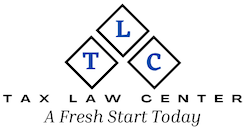Introduction
Taxes are the lifeblood of any society, funding essential services like infrastructure, healthcare, education, and national defense. In the U.S., the tax system is complex, with multiple layers of federal, state, and local taxes. For many, navigating this system is confusing, and the burden often falls disproportionately on middle- and lower-income taxpayers. This blog post delves into the structure of the U.S. tax system, the role of the Internal Revenue Service (IRS), and some of the key challenges faced by the average taxpayer.
The Structure of the U.S. Tax System
The U.S. tax system is multi-layered, with taxes levied at the federal, state, and local levels:
- Federal Taxes: These include income tax, payroll tax, and capital gains tax, among others. Federal taxes are crucial for funding national services such as defense, Social Security, and Medicare.
- State and Local Taxes: States impose taxes like income tax, sales tax, and property tax. The amount and type of taxes vary significantly between states. Some states have no income tax, while others rely heavily on it.
- Progressive vs. Regressive Taxes: The U.S. federal income tax system is progressive, meaning that higher-income earners are taxed at higher rates. However, state and local taxes, such as sales tax, are often regressive. These taxes disproportionately affect lower-income individuals, as a larger percentage of their income goes to these taxes compared to wealthier individuals.
The Role of the IRS
The Internal Revenue Service (IRS) is responsible for tax collection and enforcement. While the IRS plays a critical role in ensuring that taxes are paid, it faces several challenges and criticisms, particularly regarding how it allocates its auditing resources.
According to a 2022 report by Syracuse University, the IRS audits low-income individuals at a higher rate than high-income individuals. This imbalance is partly due to resource constraints: auditing wealthy individuals and corporations often requires more time, effort, and expertise than auditing lower-income taxpayers. As a result, the IRS tends to focus its efforts on those with simpler tax returns, which often includes low-income individuals who rely on the Earned Income Tax Credit (EITC).
Challenges Faced by the Common Taxpayer
The tax system, while necessary, is rife with inefficiencies and inequities, especially for middle- and lower-income taxpayers. These individuals often face:
- Regressive Tax Burdens: Sales and payroll taxes take a larger percentage of income from lower-wage workers compared to wealthier individuals.
- Auditing Disparities: The IRS tends to focus more on auditing low-income individuals rather than higher-income taxpayers or corporations, creating an additional layer of financial stress for the most vulnerable.
The complexity of the tax code and the difficulty in navigating it without professional help only adds to the stress for everyday taxpayers, contributing to a system that feels unjust.
Conclusion
The U.S. tax system, while designed to fund vital public services, disproportionately affects middle- and lower-income taxpayers. The IRS, constrained by resources, often audits low-income individuals more frequently than the wealthy, further exacerbating this imbalance. Understanding the structure and role of taxes is essential to navigating this complex system, but there is a clear need for reform to create a fairer and more equitable tax system.
Handling multiple papers?
Our AI sidebar — Sider assists you skim through papers 10X faster using its 10+ one-click research tools like deep reader, advanced search, ChatPDF, and context selection.
